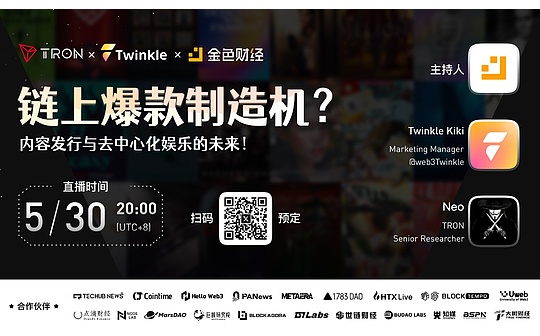Why do many crypto payment cards emerge in this cycle?

Reprinted from chaincatcher
06/01/2025·2DWritten by: Pzai, Foresight News
With the booming development of the crypto asset market, we are facing an era of "big payment cards". It seems that each protocol is rushing to have its own crypto card business and wants to maximize every retention of users within the agreement. Behind the dazzling choices are countless payment providers building a bridge between encryption and traditional payment methods. In terms of asset types and income selection, the unique asset environment on the chain also provides enough help for the growth of payment cards. Why are there many payment cards in this cycle? This article will take you to analyze from multiple perspectives.
Brief analysis of operation mode
Crypto payment cards are essentially a bridge connecting the cryptocurrency ecosystem with traditional payment networks. The entire system involves multiple participants such as users, card issuers, hosting service providers, payment channels, merchants, and card organizations. The user first applies for an encrypted payment card from the card issuer, and the card issuer organizes docking with Visa, Mastercard and other cards through the card issuing agency to complete the card issuing card issuing. At the same time, the custodian service provider is responsible for managing users' cryptocurrency assets and may invest part of the funds in other parts to obtain profits, forming a complete closed loop of capital management.
When users spend using crypto payment cards, the system will automatically perform real-time conversion of cryptocurrency to fiat currency. The specific process is: the user swipes the card to consume at the merchant, and the payment request is processed through the payment channel. The system deducts the equivalent cryptocurrency from the user's escrow account and converts it into fiat currency, and finally completes the payment to the merchant. The entire process is no different for merchants than traditional bank card payments, while users achieve the goal of directly using digital assets for daily consumption.
Current crypto payment card products have widely integrated mainstream payment methods, including Google Pay, Apple Pay and Alipay, which greatly improves the convenience of use. Major products on the market include Crypto.com Visa Card, Binance Card, Bybit Card, Bitget Card, etc. These products are usually launched by large cryptocurrency exchanges. At the technical level, some card issuers have also integrated DeFi protocols such as Ethena, Morpho, and USUAL to provide users with asset value-added services and build a complete financial service ecosystem from payment to financial management.

Source: X: Yue Xiaoyu
Growth weapon: Demand side is in full swing
According to The Brainy Insights report, the global crypto credit card market is worth US$25 billion in 2023, and the crypto payment card market size is expected to exceed US$400 billion by 2033. The essence of major agreements pouring into the payment card business is a growth battle. Although the proportion of profits of the payment card itself is relatively limited for the agreement, the payment card business has extremely high strategic value in user acquisition, ecological construction and fund precipitation. Therefore, exchanges, asset management companies, and Web3 project parties are still willing to invest because it can bring wider user and business growth and even further ecological expansion.
For the crypto field, the underlying demand based on payment has spawned many PayFi products, but Bitget Wallet's survey shows that although cryptocurrency payments show unique advantages in speed (46% of users' choice), cross-border costs (37% value low fees), and financial autonomy (32% pursue decentralization), the scale of its actual application is still significantly different from that of traditional payment systems. The current traditional payment market size is as high as trillions of dollars, covering most daily transactions around the world, while crypto payment only accounts for a very small share, mainly focusing on segmented scenarios such as cross-border remittances and digital asset transactions.
The core reasons why users prefer traditional payment methods can be attributed to the following three points:
- Trust and Security: Crypto users are concerned about the security risks of crypto payments (such as hacking and fraud), while traditional payments rely on mature banking systems, legal protection and dispute resolution mechanisms to significantly reduce transaction risks.
- Stability and convenience: Price fluctuations make it difficult for crypto payments to be a stable medium of transactions, while the stability of traditional fiat currencies is more suitable for daily consumption. In addition, users believe that insufficient merchant acceptance limits the practicality of crypto payments, while traditional payments achieve seamless coverage through extensive POS terminals and online integration.
- User experience inertia: The operating threshold of traditional payment tools is low, and users have formed long-term use habits, and the complexity and technical threshold of crypto wallets have become obstacles to popularization.
Therefore, as a bridge connecting crypto assets with the traditional payment ecosystem, the core utility potential of the payment card lies in the instant conversion of crypto assets into fiat currency to complete transactions with the help of the existing merchant settlement network, thereby realizing the utility extension of on-chain assets + real payment scenarios, while reducing the risk of cross-border channel costs and price fluctuations.
Regulatory "arbitrage": Avoid off-chain risks and reduce costs
From a regional perspective, payment settlement providers need to take into account the dual compliance characteristics of cryptocurrencies and fiat currencies, so they are more concentrated in Europe in their distribution. According to Adan.eu's research, European countries have an average of more than 10% of cryptocurrency adoption, especially among young people and fintech active areas. Consumers' preference for flexible payment methods, coupled with the expansion of the stablecoin ecosystem, has made crypto payment cards an important bridge connecting traditional finance and the Web3 world.
In addition, because the US dollar and euro are highly liquid across regions and payment cards often involve stablecoin payments, using crypto payment cards in certain countries that need to avoid systemic risks of banks can help people achieve more flexible financial services. At the tax level, the process of payment cards cashing crypto assets directly through channels avoids tax collection during some transactions to a certain extent, which has also become an opportunity for some users to use crypto cards.
In the case of incomplete supervision on the settlement side and on the chain, the existence of the gray area has become a flock of many payers, and has led to potential money laundering and regulatory evasion. However, in terms of compliance, Europe and the United States are promoting and implementing relevant laws on the crypto market as soon as possible (for example, the EU MiCA requires relevant business companies to apply for compliance licenses in EU members to continue their services and limit them within the scope of services), and such a model will no longer continue.
Business model: Open up asset portals on and off-chain
On the settlement side, crypto payment cards show a diversified operating form, among which the credit card/prepaid card form with stablecoin-consumption credit limit is the most common. Since the debit card model involves more complex fund management and risk control mechanisms, only a few payment cards can achieve it. When users have a demand for use, they need to recharge stablecoins into their account first. After the consumption amount in the card increases accordingly, users can make various types of consumption based on this amount. In this chain of capital flow, it involves the conversion of cryptocurrency and fiat currency quotas. The issuing agency obtains income through exchange rate differences, handling fees, etc. During the conversion process of cryptocurrency-fiat currency, the issuing party can generally charge a handling fee of 0.5% - 1%. Therefore, the recharge fees generated during the recharge process of users have also become one of the important sources of income for the payment card business.
On the chain, some payment cards use the integration with the DeFi protocol to introduce idle funds in the user's card into the income generation mechanism. For example, through integration with DeFi protocols such as Morpho, Infini can automatically deploy the stablecoin balance that users have not consumed into the revenue protocol, enabling users to obtain on-chain profits during consumption. Under this model, the issuer can not only obtain transaction sharing from traditional payment channels, but also share part of the profit from DeFi interest generation, forming a dual profit model. At the same time, on the basis of enjoying the convenience of payment, users have obtained asset value-added services that traditional bank cards cannot provide.
Therefore, from the perspective of income, the model of crypto payment card mainly has two parts:
On-chain tax: reserve asset interest income/product income
Stablecoin issuers earn interest by holding reserve assets such as U.S. Treasury bonds. In the first quarter of 2025, Coinbase's stablecoin-related revenue was approximately US$197 million, with an annualized interest rate typically ranging from 2% to 5%. For users, before the on-chain payment cards were released, they could not access such profit opportunities when using payment tools. The integration of on-chain protocols eliminated this barrier and provided a new idea for crypto card issuers, namely, through payment cards, to innovate capital sinking channels, reduce the cost of fund introduction, and transform into alternative "asset management". After a certain TVL scale is generated in the future, crypto issuers can innovate asset types and investment paradigms to create more value-added for users.
Off-chain tax: Payment of handling fees for card operators and card issuers
When users use USDC to make payments through payment card networks (such as Visa), Visa usually charges a swap fee of 1.5% to 3% of the transaction amount, which is generally borne by the user, and the issuer may also charge an additional 2% foreign currency transaction fee or ATM withdrawal fee. In these processing, most of the fees are attributed to the settlement process, and the card issuer mainly bears the part of the conversion process of cryptocurrency and fiat currency.
The future of payment card: from payment tools to ecological entrance
With the rapid development of blockchain technology and cryptocurrencies, crypto payment cards are no longer just simple payment tools, but have gradually evolved into an important traffic entrance to the crypto ecosystem. In the wave of "on-chain liquidity war", payment cards are not only a consumption channel, but also a strategic bridgehead to promote the large-scale adoption of blockchain technology. Encrypted payment cards allow on-chain assets to directly enter real consumption, shortening the path for users to enter Web3, such as:
- Users in the traditional financial world need to go through complex processes to transfer funds into the crypto market, and crypto payment cards allow them to use crypto assets more easily and achieve rapid off-chain access.
- While promoting the popularization of crypto payment cards, exchanges and DeFi platforms can also increase channel traffic while organically combining them with business-side operations to innovate and extend protocol functions to create profit points. For example, payment card users may receive platform points or token rewards each time they spend, which can be further used for on-chain investment, DeFi mining or other ecological services, thereby forming a positive feedback loop between the user and the platform.
- New users can first use encrypted payment cards to consume when entering the market, and then gradually enter the on-chain ecosystem. This "consumption-driven" user guidance method is expected to become the mainstream traffic entrance strategy for Web3.
Looking ahead, the competition for crypto payment cards will further shift from a single payment tool to an ecological and integrated financial platform. Project parties need to break the curse of "short life" of crypto payment cards through technological innovation, compliance construction and user experience optimization. The future crypto payment cards will not only be consumer tools, but also a comprehensive financial platform integrating payment, investment, credit assessment and ecological incentives. Through in-depth integration with Web3 elements such as DeFi, NFT and on-chain governance, payment cards will become the core entrance for users to enter the decentralized world.




 jinse
jinse